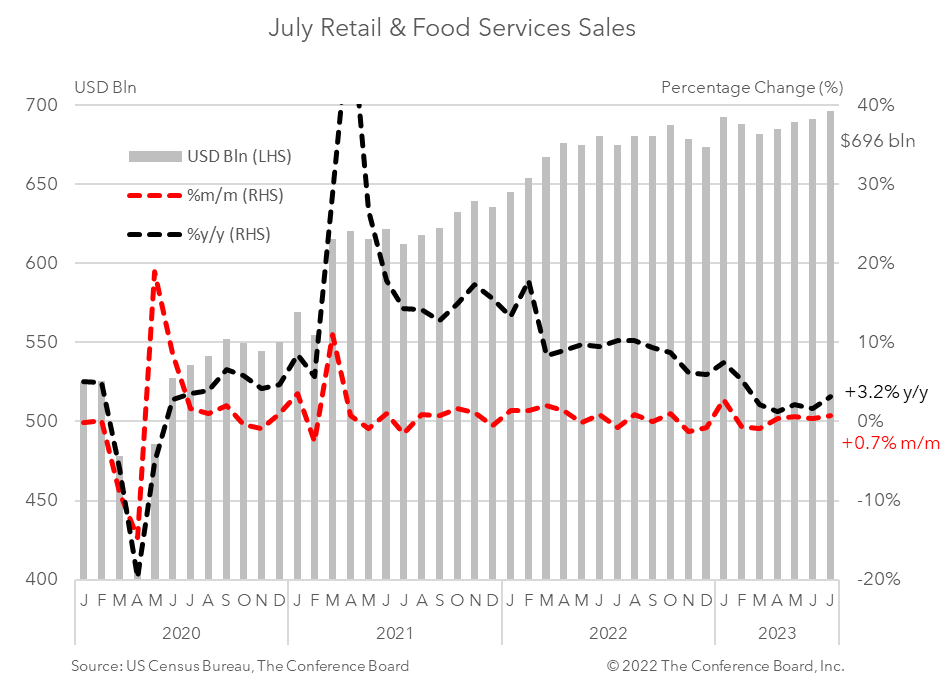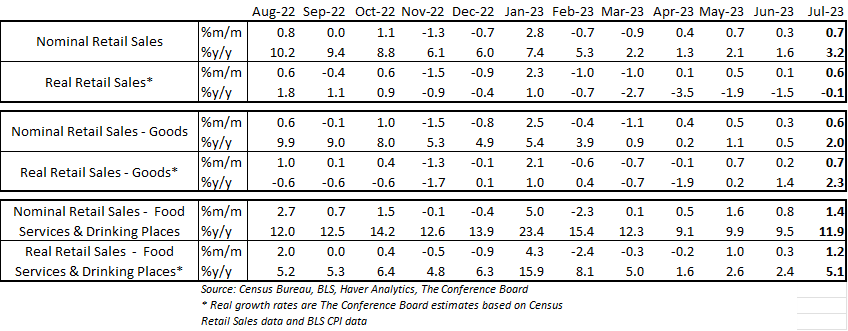July Retail Sales Show Continued Consumer Resilience
15 Aug. 2023 | Comments (0)
Retail sales jumped in July as US consumers continued to open their wallets. Consumer spending was up 0.7 percent month-over-month (MoM), well above the consensus expectation of 0.4 percent. Adjusted for inflation, sales were up 0.6 percent from May.*
These data showcase the continued resilience of US consumers amid high interest rates and elevated inflation. Tight labor markets, rising wages, and rising consumer confidence are driving the US consumer to keep spending. The Conference board forecasts that US real consumer spending** will grow by about 2.0 percent year-over-year in 2023, vs. 2.7 percent in 2022. This trend has buttressed the US economy and prevented a widely anticipated recession from occurring. While we acknowledge that a soft landing for the US economy is rising, we believe that a very brief economic downturn starting in late 2023 or early 2024 is the more probable outcome.
Consumer demand for goods rose 0.6 percent in July from the month prior in nominal terms. Spending on motor vehicles and parts fell by -0.3 percent in July from June, while retail sales excluding motor vehicles rose by 0.9 percent. Spending at gasoline stations rose 0.4 percent from the month prior due to rising oil prices. Building materials sales rose by 0.7 percent. Retail sales less motor vehicles, gasoline, and building supplies (known as “Retail Control”) rose by 1.0 percent from the previous month. Nonstore retail sales growth rose to 1.9 percent in July, the fastest rates seen since last December. When adjusting goods spending for CPI inflation, the real growth rate was about 0.7 percent from the previous month.*
Meanwhile, spending at food services and drinking places rose by 1.4 percent month-over-month in July. After adjusting for CPI inflation the real growth rate was about 1.2 percent from the previous month.*


* Real growth rates are The Conference Board estimates based on Census Retail Sales data and BLS CPI data.
** The Conference Board’s forecast on US consumer spending is based on Personal Consumption Expenditures which is a broader gauge of spending than Retail Sales.
-
About the Author:Erik Lundh
Erik Lundh is Senior Global Economist for The Conference Board Economy, Strategy & Finance Center, where he focuses on monitoring global economic developments and overseeing the organization&rsquo…




0 Comment Comment Policy